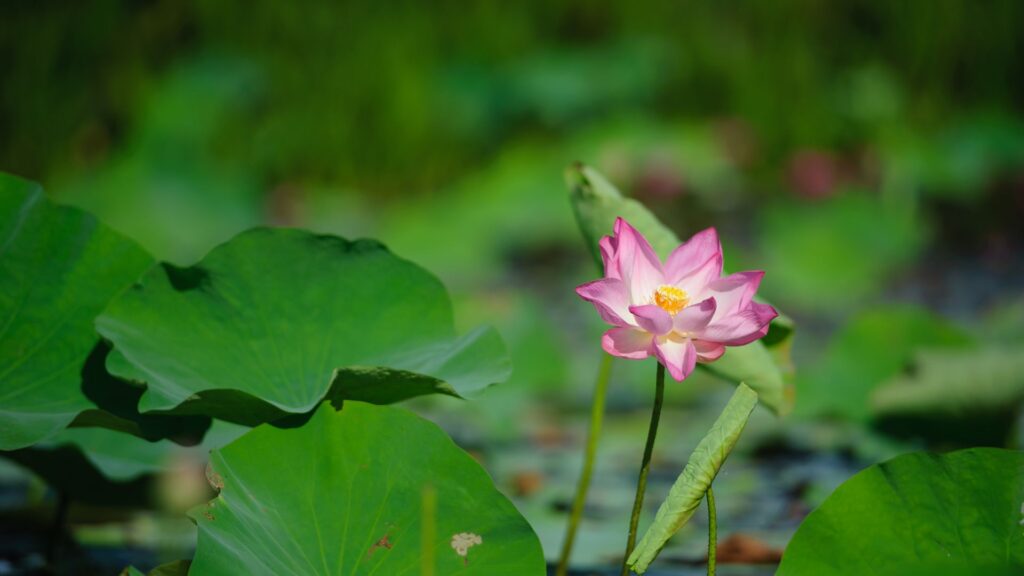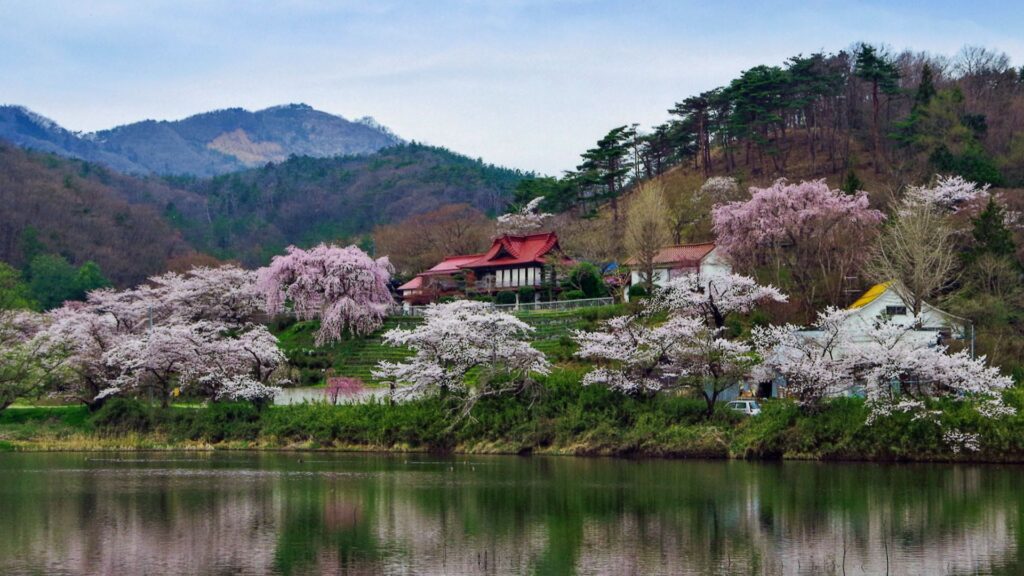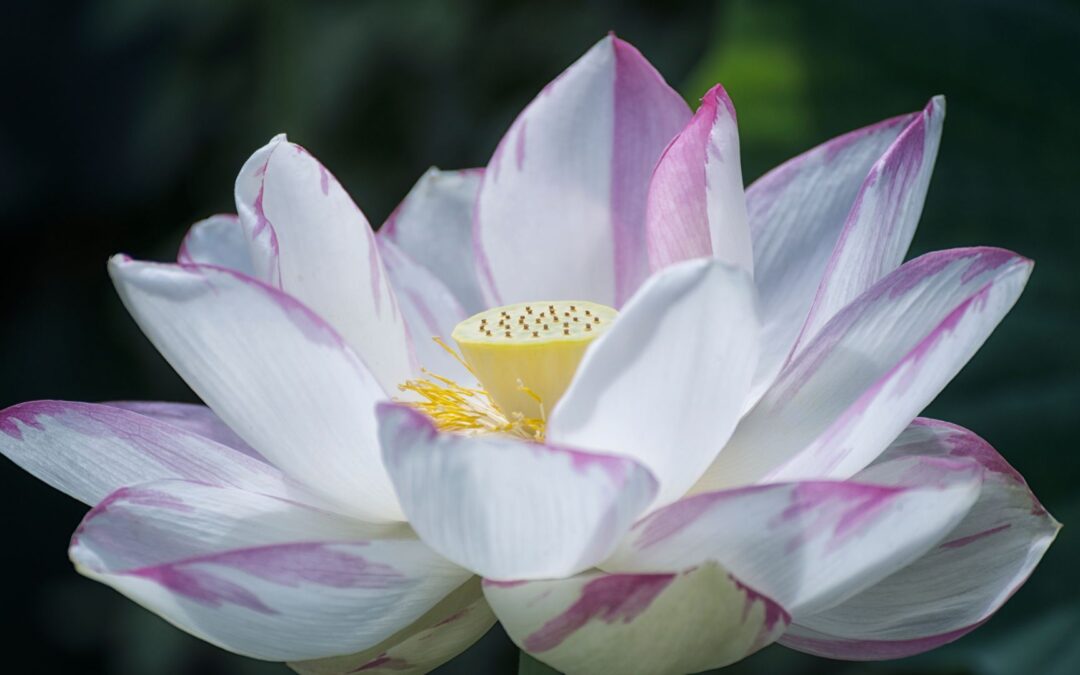Each flower in Japan has its own unique appeal. Regardless of the season or location within Japan, you’ll discover an array of flowers at every turn. The Indian lotus in Japan is particularly striking, with various scenic spots throughout the country where you can admire these seasonal blooms. To make the most of your experience with Japanese Indian lotus, let’s take a closer look at where and when you can find them.
Find out all about the different flowers in Japan you can enjoy throughout the year: Cherry Blossoms, Tulips, Azaleas, Roses, Poppies, Salvia, Hydrangea, Iris, Lavender, Indian Lotus, Sunflowers, Ume, and Moss Phlox.
Indian Lotus in Japan

Lotus plants have evolved to thrive in slow-moving river floodplains and delta environments. Every year, hundreds of thousands of seeds fall to the pond’s bottom from lotus stands. While some seeds sprout right away, and the majority are eaten by wildlife, the rest can remain dormant for a long time as the pond silts in and dries up. The roots of the lotus plant are planted in the pond or river’s soil, while the leaves float on the water’s surface or are supported high above it. The flowers are frequently found a few centimetres above the leaves on robust stems.
The Indian lotus holds a revered place in Japanese culture, often symbolizing spiritual enlightenment, purity, and rebirth. Its significance extends beyond aesthetics, representing the ability to fulfill one’s duties without being swayed by desires or worldly temptations, a concept deeply ingrained in Japan’s cultural traditions.
When to See Indian Lotus in Japan

Timing your visit to witness the mesmerising Indian Lotus in Japan requires a bit of local insight. Typically, the enchanting bloom of these lotuses graces Japanese waters from June to July. However, the specific flowering season can vary depending on the region and local climate conditions. During this period, nature lovers and photographers eagerly anticipate the unfolding beauty of the Indian Lotus, adorning ponds and waterways across the country. So, mark your calendars and prepare to immerse yourself in the serene elegance of Japanese Indian Lotus during the balmy days of June and July.
Where to See Indian Lotus in Japan
Prepare to be captivated as we unveil the hidden gems of Japan’s natural tapestry, where the Indian Lotus reigns supreme. In every corner of this captivating country, from the tranquil countryside to the vibrant heart of bustling cities, lies a treasure trove of spots showcasing the exquisite beauty of Japanese Indian Lotus. Whether you seek solace in serene ponds or crave the buzz of urban gardens, Japan offers an unparalleled opportunity to witness these timeless blooms in all their splendour.
Izunuma and Uchinuma Hass

Izunuma and Uchinuma, also known as swan wintering grounds, are home to a variety of aquatic organisms. Witnessing a majestic swan soaring overhead from a swamp’s embankment is truly breathtaking. But what steals the show are the Indian lotus flowers that grace the landscape during the summer months! The fragrance of lotus blooms wafts through the air as I stand on the edge of the wetland. For an up-close encounter with these beauties, hop on a boat during the annual “Hasu Matsuri.”
Senshu Park

Nestled within the grounds of Kubota Castle, the ancestral abode of Mr. Satake of the Akita clan, Senshu Park boasts a rich history spanning 12 generations and 267 years. Summer here is a treat, with lotus flowers adorning the moat of Otemon, renowned for its cherry blossoms and azaleas.
The park also houses the restored Kubota Castle front gate, the Imperial Treasure Gobansho, the Chiaki bell, and the observatory of the Misumi turret perched atop a hill, offering panoramic views of the city. With seasonal delights like cherry blossoms, azaleas, lotus, and pine trees, each visit promises a good time.
Janohana Garden

Designated as a national tangible cultural heritage site in 1996, Janohana Garden still exudes its majestic charm. Visitors are captivated by the opulent artworks and intricate sculptures. The scene of a picturesque struggle between water lilies and Janohana Palace in the masonry pond is truly enchanting, resembling a canvas adorned with thousands of blossoms. The yard boasts wisteria trellises and rose gardens, promising a delightful floral display throughout the year.
Discovering Japan’s Floral Wonders
What do you think about these flowers in Japan? There are so many different colors, shapes, types, and sizes of flowers, no matter which season you decide to visit Japan, you will surely be able to find gorgeous Japanese flowers to enjoy!
Japan’s floral landscape offers a captivating array of colors and textures throughout the year. From the serene beauty of Indian lotus blossoms adorning wetlands like Izunuma and Uchinuma to the vibrant cherry blossoms and azaleas gracing the historic grounds of Kubota Castle, each season unveils its own floral spectacle.
Find out all about the different flowers in Japan you can enjoy throughout the year: Cherry Blossoms, Tulips, Azaleas, Roses, Poppies, Salvia, Hydrangea, Iris, Lavender, Indian Lotus, Sunflowers, Ume, and Moss Phlox.


Trackbacks/Pingbacks